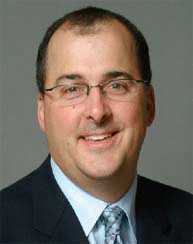When repairing a spontaneous cerebrospinal fluid (CSF) leak, the surgeon needs to take extra measures to guard against recurrence, according to a team of investigators at the University of Pennsylvania.
Explore This Issue
May 2008Because such leaks have a higher recurrence rate than those occurring secondary to external events, such as trauma or surgery, the team developed a paradigm for managing spontaneous CSF leaks, which they presented at the 2007 annual meeting of the American Academy of Otolaryngology-Head and Neck Surgery (AAO-HNS).
 The important steps are to first identify what type of leak the patient has-whether iatrogenic, traumatic, congenital, tumor, or spontaneous-and, second, if it is spontaneous, to determine whether the CSF pressure is normal or elevated.
The important steps are to first identify what type of leak the patient has-whether iatrogenic, traumatic, congenital, tumor, or spontaneous-and, second, if it is spontaneous, to determine whether the CSF pressure is normal or elevated.-James Palmer, MD
The important steps are to first identify what type of leak the patient has-whether iatrogenic, traumatic, congenital, tumor, or spontaneous-and, second, if it is spontaneous, to determine whether the CSF pressure is normal or elevated, said James Palmer, MD, Director of the Division of Rhinology and A ssociate Professor in the Department of Otorhinolaryngology-Head and Neck Surgery at the University of Pennsylvania. If you can identify the nature of the leak, then you can identify the appropriate mechanism for repairing it.
Intracranial Pressure Increases Risk of Recurrence
Dr. Palmer noted that spontaneous CSF leaks are more likely to be associated with an abnormally high CSF pressure. In those cases, repair with an autologous bone graft is helpful to prevent recurrence, he said.
In the data presented at the AAO-HNS meeting, the investigators stressed that intracranial hypertension is often the underlying factor in the development of spontaneous CSF leaks. The increased pressure can also put the repair at a higher risk of recurrence than leaks due to trauma or spontaneous leaks with a normal baseline intracranial pressure.
The retrospective review on which the paradigm is based analyzed the results of 53 patients who underwent endoscopic repair of spontaneous CSF leaks. The patients’ average age was 61 years, with a range of 19 to 79 years, and they had an average body mass index (BMI) of 36.2. All patients presented with rhinorrhea due to their CSF leaks, and 10 had meningitis.
The most common defect was in the lateral sphenoid sinus, which was present in 23 patients; ethmoid roof defects were documented in 14 patients. In the remaining patients, 11 had defects in the cribriform plate and seven each had central sphenoid and frontal sinus defects. Among these patients, nine had multiple CSF leaks at the time that they were treated, and the vast majority, 50 patients (94%), had associated encephaloceles.
Leave a Reply